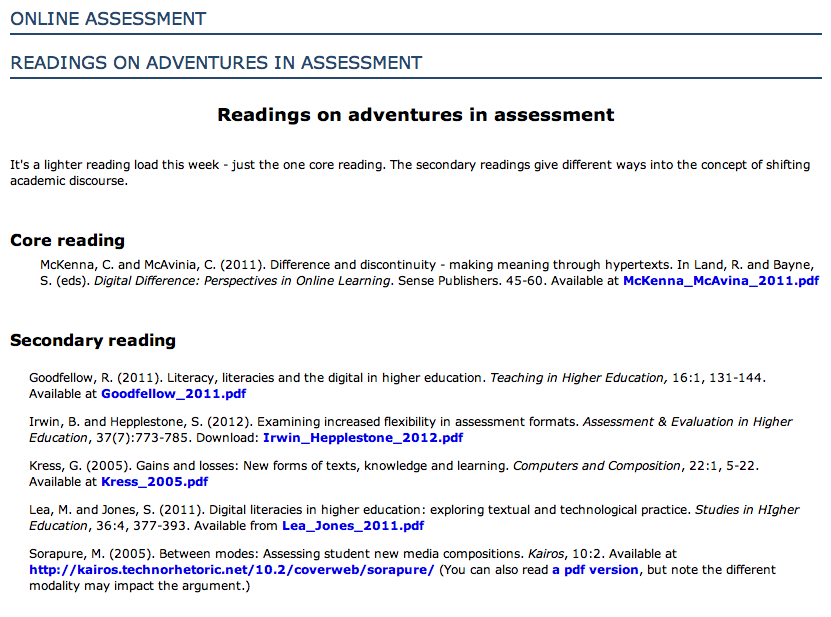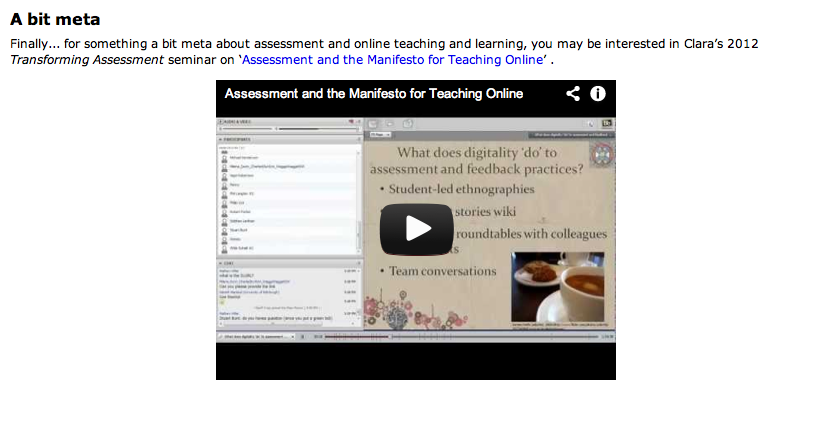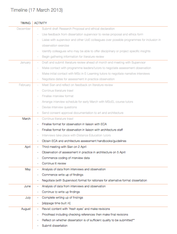|
I've been shadowing the Online Assessment discussions this week and have discovered and rediscovered some resources: These are the core and secondary readings (click to visit course site): This is Clara's transforming assessment seminar covering the Manifesto (link): Here's the transcript from my own EDC assignment with some useful links: http://multimodal-assignment.weebly.com/uploads/2/0/7/0/2070115/edc_transcript_from_voice_over.pdf Here's a link to Sian's OA session from last year: The audio: The slides: http://www.malts.ed.ac.uk/staff/sian/assessment/p01.htm
Finally, here's the text from the site about assessment in creative crisis:
0 Comments
Leave a Reply. |
Categories
All
Archives
October 2013
TimelineOther stuff
|
||||||||


